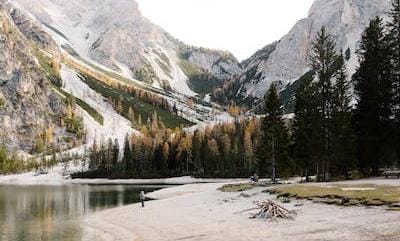Nature, with its awe-inspiring beauty and immense power, is a paradoxical force. It offers unparalleled protection, nurturing life, and sustaining ecosystems, but it can also unleash catastrophic destruction. The dual nature of the environment reflects the delicate balance between its nurturing and destructive aspects, and understanding this duality is crucial for human survival and the preservation of our planet.
- The Protective Aspect of Nature
- Nurturing Life
- Biodiversity: Nature is the cradle of biodiversity, providing a myriad of habitats and ecosystems that support a wide array of life forms. The interdependence of species ensures the stability and resilience of ecosystems.
- Natural Resources: Nature furnishes essential resources like clean air, water, fertile soil, and food, which are critical for human survival and well-being.
- Climate Regulation
- Carbon Sequestration: Forests and oceans absorb vast amounts of carbon dioxide, helping mitigate climate change by regulating greenhouse gas levels.
- Weather Patterns: Natural systems influence weather patterns, playing a role in temperature regulation and the distribution of rainfall, ensuring fertile lands for agriculture.
- Biodiversity and Medicine
- Medicinal Discoveries: Many life-saving drugs have been derived from plants and organisms found in nature, highlighting the potential of natural habitats in advancing medical research.
- Genetic Diversity: The genetic diversity present in nature provides a genetic reservoir for potential medical breakthroughs.
- The Destructive Aspect of Nature
- Natural Disasters
- Earthquakes: Tectonic plate movements can cause devastating earthquakes, resulting in loss of life and infrastructure damage.
- Hurricanes and Cyclones: Storm systems can unleash powerful winds and torrential rains, leading to catastrophic flooding and destruction in coastal regions.
- Volcanic Eruptions: Volcanic activity can result in ash clouds, lava flows, and pyroclastic surges, posing a significant threat to nearby communities.
- Extreme Weather Events
- Droughts: Prolonged periods of drought can lead to water scarcity, crop failure, and food shortages.
- Floods: Excessive rainfall or snowmelt can trigger widespread flooding, displacing populations and causing damage to homes and infrastructure.
- Climate Change
- Rising Temperatures: Climate change, driven by human activities, is causing rising global temperatures, which can lead to heatwaves, melting ice caps, and changing weather patterns.
- Sea-Level Rise: As global temperatures increase, sea levels rise, posing a threat to coastal communities and ecosystems.
III. The Interplay between Protection and Destruction
- Ecosystem Resilience
- Natural Buffers: Ecosystems act as buffers against disasters by absorbing excess rainfall, reducing the impact of floods, and providing shelter.
- Fire Ecology: Some ecosystems, like certain types of forests, have adapted to periodic wildfires, which can stimulate new growth and maintain ecological balance.
- Human Impact
- Environmental Stewardship: Human intervention in ecosystems can exacerbate both protection and destruction. Responsible stewardship can mitigate the damage caused by human activities.
- Climate Change Mitigation: Humans play a pivotal role in addressing climate change, by reducing greenhouse gas emissions and adopting sustainable practices.
- Adaptation and Preparedness
- Disaster Preparedness: Human societies can implement disaster preparedness measures to minimize the loss of life and property during natural disasters.
- Resilience Building: Communities can invest in resilient infrastructure and adopt practices that enhance their ability to bounce back from environmental challenges.
- Conclusion
Nature’s dual nature as both protective and destructive is a reflection of its intricate balance. While it sustains life, provides resources, and offers inspiration, it can also unleash forces of destruction beyond human control. The delicate equilibrium of the environment underscores the importance of responsible stewardship and proactive measures to mitigate the negative impacts of our actions.
Understanding the interplay between the protective and destructive aspects of nature is essential for our own survival and the preservation of the planet. It is imperative that we recognize our role in climate change and environmental degradation and take decisive action to protect the invaluable resources and ecosystems that nurture and sustain us. In this endeavor, we must work harmoniously with nature, respecting its power and harnessing its potential to create a sustainable future for generations to come.

